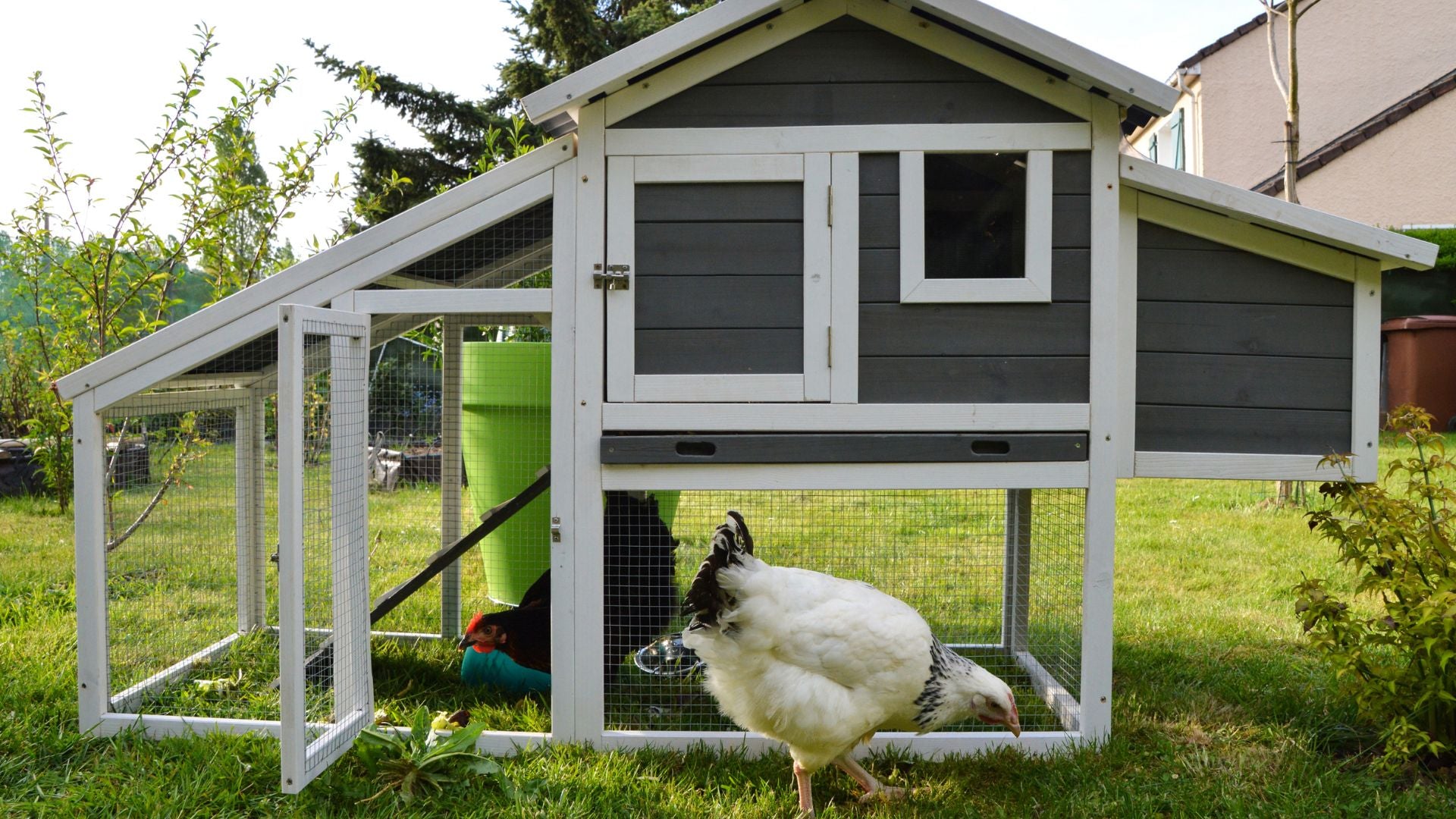A hutch maintenance routine is essential for keeping your rabbit’s living space clean, hygienic, and comfortable. Regular upkeep not only ensures a pleasant environment for your pet but also helps prevent health issues and extends the lifespan of the hutch itself. By implementing a consistent cleaning schedule, you create a healthier habitat that promotes your rabbit’s well-being and reduces the risk of diseases.
A well-maintained hutch offers numerous benefits, including improved air quality, odour control, and pest prevention. It also allows you to spot any potential problems early, such as worn-out components or signs of chewing that might require attention. Furthermore, a clean hutch makes daily care tasks easier and more enjoyable for both you and your rabbit.
When performing hutch maintenance, it’s crucial to use pet-safe cleaning products. Rabbits, for example, have sensitive respiratory systems and can be adversely affected by harsh chemicals or strong odours. Opting for non-toxic, rabbit-friendly cleaners ensures that your furry friend remains safe and healthy. These products effectively sanitise the hutch without leaving behind harmful residues that could be ingested or irritate your rabbit’s skin and airways.
Creating a Cleaning Schedule
Just like our own homes, hutches need regular cleaning to ensure the health and happiness of our furry (or feathery) friends. A regular cleaning schedule prevents ammonia build-up from urine, reduces the spread of bacteria, and minimises unpleasant odours.

Keeping your hutch clean requires a three-pronged approach: daily spot cleaning of soiled areas, a weekly deep clean with disinfectant wipes and fresh bedding, and a thorough, every-few-months deep clean where you disassemble the hutch (if possible) and scrub every surface with a pet-safe disinfectant before letting it dry completely and reassembling.
Cleaning Frequency
- High-maintenance pets: Rabbits, guinea pigs, and ferrets require more frequent cleaning due to their higher urine output. Aim for spot cleaning daily, weekly cleaning, and deep cleaning every 2-3 months.
- Lower maintenance pets: Chinchillas and hamsters require less frequent cleaning as they are more meticulous about their bathroom habits. Spot cleaning daily and weekly cleaning might suffice, with deep cleaning every 4-6 months.
Seasonal Considerations
Remember, your cleaning routine might need to adapt to the seasons. During hot summers, ensure proper ventilation in the hutch to prevent ammonia buildup. Conversely, colder winters may require adjusting bedding amounts to keep your pet warm.
Spot Cleaning: Maintaining a Fresh Hutch
Spot cleaning is the daily practice of removing soiled bedding, uneaten food, and droppings from your rabbit’s hutch. This regular maintenance keeps the environment hygienic and minimises unpleasant odours.
Daily Cleaning Routine
- Target soiled areas: Lift soiled bedding and dispose of it. Uneaten hay or pellets can be removed and offered again later. Droppings can be scooped up with a litter scoop specifically designed for rabbits.
- Safe waste disposal: Wrap soiled materials in a plastic bag and discard them in a sealed bin outdoors. Wash the litter scoop with hot, soapy water and disinfect it regularly.
- Address spills promptly: Accidents happen. If your rabbit spills water or food, clean it up immediately with a pet-safe disinfectant solution. This prevents stains, odours, and the growth of bacteria.
Weekly Hutch Refresh: A Step-by-Step Guide
Keeping your pet’s hutch clean is vital for their health and happiness. Here’s a step-by-step guide for a thorough weekly clean:

- Prep Time: Before you begin, remove all your furry friends and their belongings from the hutch. This includes food and water bowls, hiding spots, and toys. Place your pets in a secure, escape-proof pen with fresh food, water, and a familiar toy.
- Bedding Blitz: Start by removing all the old bedding and disposing of it responsibly (check your local guidelines for any restrictions on pet waste disposal).
- Wipe It Down: Now, it’s time to clean the hutch itself. Use warm water and a pet-safe disinfectant solution. A gentle vinegar solution is a great natural option. To make it, mix one part white vinegar with four parts water in a spray bottle. Avoid harsh chemicals, as these can be harmful to your pet. Thoroughly wipe down all surfaces, paying particular attention to corners and crevices where waste might accumulate.
- Bowl Beauty: Wash the food and water bowls with warm, soapy water. Rinse them well to remove any soap residue. Consider soaking particularly grimy dishes for a few minutes before scrubbing.
- Disinfect and Dry: Once you’ve finished wiping down the hutch, rinse the entire area thoroughly with clean water to remove any cleaning solution residue. Remember, even small amounts of cleaner can irritate your pet’s skin.
- Hay There! Wash or replace any soiled hay feeders and hiding spots. If they’re machine washable, check the care label for instructions. Non-washable items can be disinfected with the vinegar solution and rinsed thoroughly.
- Drying Time: This is crucial. Allow the hutch to dry completely before reintroducing your pets. Moisture can lead to mould growth, which can be harmful to your pet’s respiratory system. If possible, dry the hutch outdoors in direct sunlight.
- Welcome Home: Once the hutch is clean and dry, return your pet’s belongings and then your furry friend(s). They’ll appreciate a fresh, clean home!
Giving Your Hutch a Deep Clean
Regular deep cleaning, typically every 3-6 months, is essential for maintaining a healthy environment for your furry friend. It removes built-up dirt, grime, and bacteria that can contribute to unpleasant odours and even illness.
Preparing for the Deep Clean
- Empty the Hutch: Remove everything, including food and water bowls, bedding, toys, and even fixed structures like ramps (if they detach safely). This allows for a thorough cleaning of all surfaces.
Cleaning Powerhouse
- Scrub Stains: For stubborn stains, create a paste of baking soda and water. This natural cleaning agent is safe for pets and effective at tackling tough messes. Scrub the paste onto the stain, let it sit for a few minutes, then rinse thoroughly.
- Disinfect: Once the hutch is scrubbed clean, disinfect all surfaces with a diluted pet-safe disinfectant solution. Follow the manufacturer’s instructions for proper dilution and application.
- Don’t Forget the Corners: Pay special attention to corners, nooks, and areas under the hutch where dirt and debris tend to accumulate. A small brush can be helpful for reaching these tight spaces.
The Final Rinse
- Rinse, Rinse, Rinse: After applying any cleaning solutions, thoroughly rinse the entire hutch with clean water. This removes any cleaning residue that could be harmful to your pet.
- Drying Out: Allow the hutch to air dry completely before placing anything back inside. This prevents the growth of mould and mildew.
Fresh Start: Replenishing the Hutch
Here’s a checklist for replenishing your hutch after cleaning:
Hutch Replenishment Checklist
- Bedding: Add fresh, absorbent bedding like hay or wood shavings.
- Food and Water: Refill food and water bowls with fresh food and water.
- Hay feeders and hiding spots: Replace hay feeders and hiding spots if soiled or damaged.
- Enrichment: Offer enrichment items like chew toys and digging boxes to keep your pet happy and entertained.
Additional Tips for Maintaining a Clean Hutch
Here are a few additional ideas to keep your hutch sparkling clean and smelling fresh:

- Spot clean daily: Remove soiled bedding, uneaten food, and droppings every day to minimise odours and prevent ammonia build-up.
- Deep clean weekly: Once a week, remove everything from the hutch and thoroughly clean it with warm water and a pet-safe disinfectant like diluted white vinegar. Be sure to rinse well and allow everything to dry completely before putting it back.
- Hay for bedding: Opt for absorbent hay like oat or meadow hay for the majority of your rabbit’s bedding. Hay is comfortable for your rabbit to burrow in and helps control odours naturally.
- Litter box training: Train your rabbit to use a litter box for easier cleaning. Place the litter box in a corner of the hutch and fill it with small animal litter made from recycled paper or wood pulp.
Keep Your Furry Friend Thriving With a Regular Maintenance Routine!
Keeping your pet hutch clean and well-maintained is vital for your furry friend’s health and happiness. By following the simple steps outlined in this blog, you can create a comfortable and hygienic environment in which your pet can thrive. Remember, a clean hutch means a less smelly home for you, too!
Thank you for reading! At Garden Depot, we are passionate about providing everything you need to be the best pet parent possible. We offer a wide selection of high-quality pet hutches, safe and effective cleaning supplies, and expert advice from our friendly staff. Browse our website or contact us today to find everything you need to keep your pet happy and healthy.

